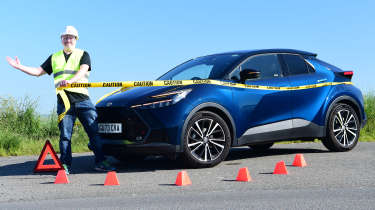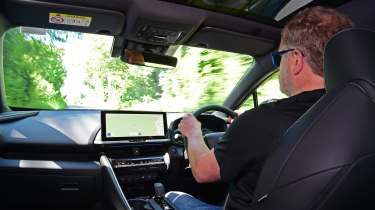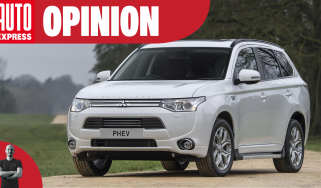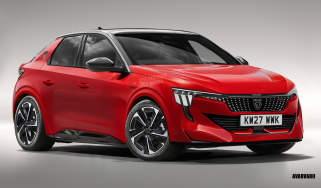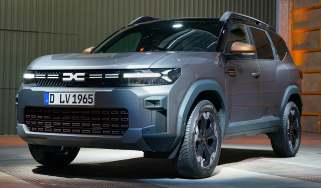Toyota C-HR Excel long-term test: hybrid SUV is capable but not the most exciting
Final report: strikingly styled SUV leaves us with plenty of questions
Verdict
The Toyota C-HR is a good car – almost a million sales across Europe proves it’s hitting the spot with customers. Stylish, well equipped and efficient, there’s no doubt that it ticks a lot of boxes, but we wish it offered more driver involvement and integrated its (admittedly excellent) safety tech a little better.
- Mileage: 1,377
- Efficiency: 54.6mpg
I’m usually pretty good at making up my mind about whether I like something or not; films, music, sport – I’ve got strong opinions on most of life’s more divisive topics. Normally, that would include everything to do with cars, too, but I’ve reached an unusual impasse with my Toyota C-HR long-term test car. After almost three months and 1,600 miles of driving, I just can’t decide on my true feelings towards the funky hybrid SUV.
When the C-HR was delivered back in April, my first impressions were largely positive; its dramatic styling and smart Midnight Teal metallic paintwork are a classy combination, while the distinctive 19-inch machined alloys add a more muscular look that works well with the C-HR’s squat, sporty exterior. It’s a striking design that definitely turns heads.
Inside, the front cabin is a little snug, and there isn’t a great deal of room for taller passengers in the rear, but it feels well screwed together and the materials on show are mostly of a good standard.
More reviews
Car group tests
- Kia Sportage vs Toyota C-HR: can Toyota’s new arrival beat Kia’s best-seller?
- Volkswagen Taigo vs Toyota C-HR: 2022 twin test review
- Renault Arkana vs Toyota C-HR: 2021 group test review
- Toyota C-HR vs Peugeot 3008
In-depth reviews
Road tests
Used car tests
But it was once I started actually driving the car that things unravelled a little. The couple of prods of the start button required to engage drive mode are mildly irritating, as are the legal caveats displayed on the infotainment touchscreen that need boxes ticking before every journey.
However, the real stumbling block for me is the Toyota Safety Sense technology. I suppose you could say that the suite of active safety systems work as they should – and, in fact, did save me from a car park prang – but there’s just too much nannying for my liking. The amount of bings and bongs the system creates is bordering on the tortuous, with the worst experience being taking my son to a local cricket match accessed along a narrow, single-track lane.
Having my labrador in the rear seats constantly activating the seatbelt warning chime was not a good start, while the C-HR thought I should know – via the medium of incessant beeps – that the grass verges on either side were also too close for comfort. The thing is, the noise just never stops, and I arrived at the car park to a cacophony of bells and whistles that actually proved to be more distracting than helpful.
The easy fix would be to have a button that saves your personal preferences, in terms of which systems you’d like to keep switched on and the desired level of effectiveness. As far as I can tell, all the safety tech has to be adjusted through the central driver display, when it would be far easier to access the settings using the impressive 12.3-inch infotainment touchscreen. Anyway, rant over, although there is a complement for Toyota in there somewhere, because the tech is essentially flawless; there just needs to be some more flexibility in how it’s delivered.
I should say, given that this is a relatively small car sitting on big alloy wheels, I find its ride surprisingly good, and Toyota has struck a nice balance in the way the C-HR is able to soak up road imperfections.
The Japanese manufacturer’s apparent focus on introducing increased safety levels and improved efficiency has been a success. But while I’m benefitting from more than 54mpg on a variety of roads, I’d like a little more involvement at the wheel.
The C-HR feels like it could be a good driver’s car, but is ultimately undone (at least in this 138bhp 1.8-litre petrol-hybrid specification) by a shortage of power and a noisy CVT gearbox that puffs and wheezes when you want to press on. If you’re after a smartly styled and safe-to-drive small SUV, that will probably spend most of its life on shorter journeys and running errands from A to B, then the C-HR starts to make more sense – and there are always the more powerful hybrid and plug-in hybrid options further up the range if you’re looking for extra straight-line performance.
Final decision? I like the C-HR. But I’d like it a great deal more if Toyota administered a dynamic boost to back up its dramatic style.
Toyota C-HR Excel: first report
Safety tech saves our new C-HR from a prang in a car park
- Mileage: 793
- Efficiency: 54.4mpg
Studies have shown that we form a first impression within fractions of a second, our brains making immediate judgments about whether we’re going to like something or not. Things got off to a good start when the nice man from Toyota dropped off my new C-HR test car; the small hybrid SUV arrived in range topping Excel spec and finished in attractive Midnight Teal bi-tone paint that complements the car’s strong lines and dramatic creases.
C-HR actually stands for Compact High Rider in Toyota speak, but in the metal it has a squat, sporty appearance that works well – albeit with the slightly elevated ride height that buyers seem to crave nowadays. Nonetheless, the C-HR is a good-looking car, although a quick look inside revealed a mixture of materials, from the premium feel of the suede-effect trim on the doors, to the disappointingly cheap-looking plastic on the centre armrest and across the top of the dash – a strange decision in a cabin that otherwise left me pretty impressed.
The C-HR’s crossover design, combined with its sloping coupe-like roofline, means that interior space is a little tight. While it’s not too bad up front, recent road trips with my wife, two young children and our sizable Labrador have highlighted the shortage of rear passenger space. The smallish 388-litre boot isn’t the most generous either, and is trumped by those in the Hyundai Kona and Kia Niro. Given that the Toyota will be used as a family car, it’ll be interesting to see over the next few months whether it offers up as much substance as it does style.
Toyota has done a fine job of ensuring the C-HR looks the part, with my model featuring 19-inch machined alloys, rear privacy glass and a panoramic glass roof, while the cabin includes configurable ambient lighting and premium sports seats.
There’s certainly no shortage of standard kit, with lots of useful features such as keyless entry, a powered tailgate, cornering lights and heated seats. The dual 12.3-inch displays up front look great; the central screen controls the infotainment system, while the digital driver’s panel – although a little fussy looking – does a good job of providing all the information you need.
The C-HR is already proving to be one of those cars you can just jump in and drive; little touches such as the wireless phone charging pad and a memory function for the driver’s seat position make for a quick getaway with the minimum of fuss, while the premium sports seats offer decent support and are comfortable.
Toyota offers the C-HR with either a 1.8-litre or 2.0-litre hybrid engine, or as a plug-in hybrid. Mine’s the smaller hybrid version with 138bhp and, after the near 800 miles I’ve completed across various A-roads, B-roads and motorway driving, I’m wondering about the benefits of the extra oomph that’s on offer with the 197bhp 2.0-litre model.
My car’s perfectly fine around town and at a cruise, but it huffs and puffs a little when you put your foot down to overtake. Things aren’t helped by the CVT automatic gearbox, which creates the infamous drone from the engine under hard acceleration. However, I’m seeing excellent fuel efficiency, with my current average of 54.4mpg edging towards Toyota’s 57-60mpg claim.
So, with all that said and done, I probably need to explain the picture on the right. I haven’t been involved in an accident, nor do I feel the need to warn you off the C-HR. Quite the opposite, in fact. My car’s Excel spec comes with Toyota Safety Sense, which is a full suite of active systems designed to help prevent the worst happening on the road – and when I say full suite, I mean everything but the kitchen sink. I have never driven a car that has as much safety technology as the C HR. It’s staggering.
The system has already saved me from a car-park prang – not just by alerting me to an unseen bollard, but by automatically braking when I nearly reversed into it. I can see Safety Sense being a strong theme in my ongoing reports. Yes, it’s intrusive, but I still appreciate it being there. It’ll be interesting to see if we’re still friends in a few months.
| Model: | Toyota C-HR Excel |
| Rating: | 3.5 stars |
| On fleet since: | April 2024 |
| Price new: | £38,160 |
| CO2: | 105-111g/km |
| Tax: | £185 |
| Options: | None |
| Insurance*: | Group: 22 Quote: £1,298 |
| Mileage: | 1,377 |
| MPG: | 54.6mpg |
| Any problems? | None so far |
*Insurance quote from AA (0800 107 0680) for a 42-year-old in Banbury, Oxon, with three points.



